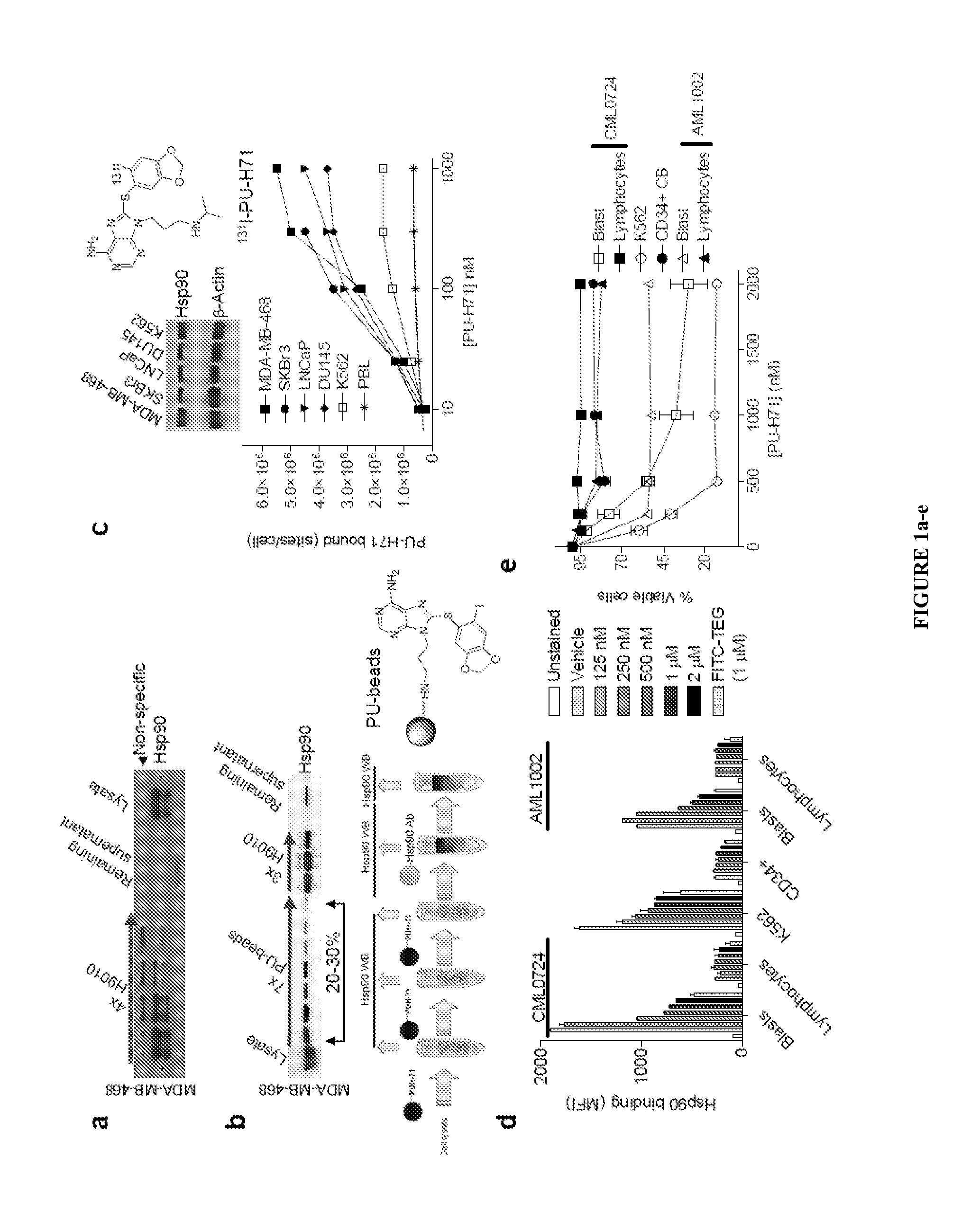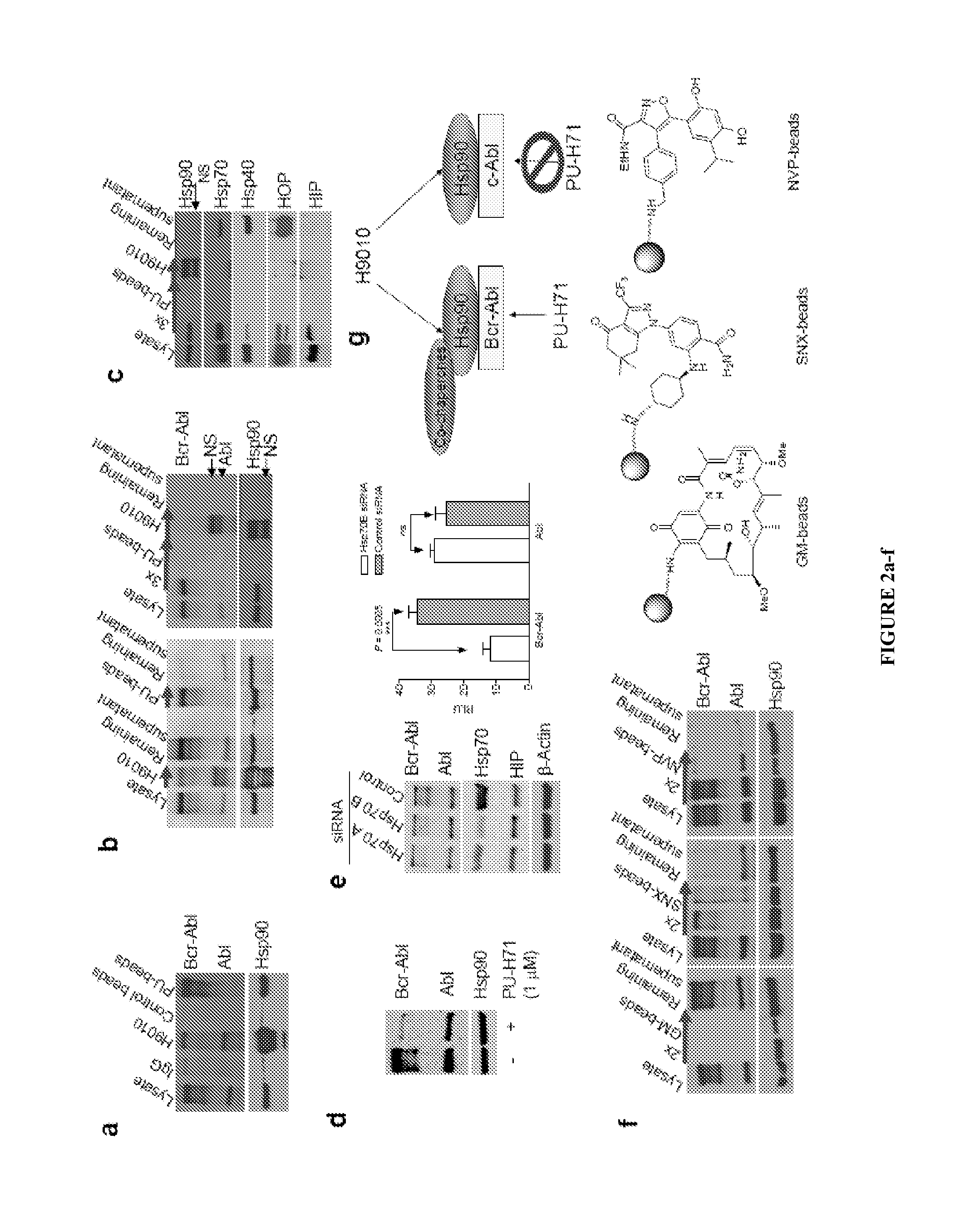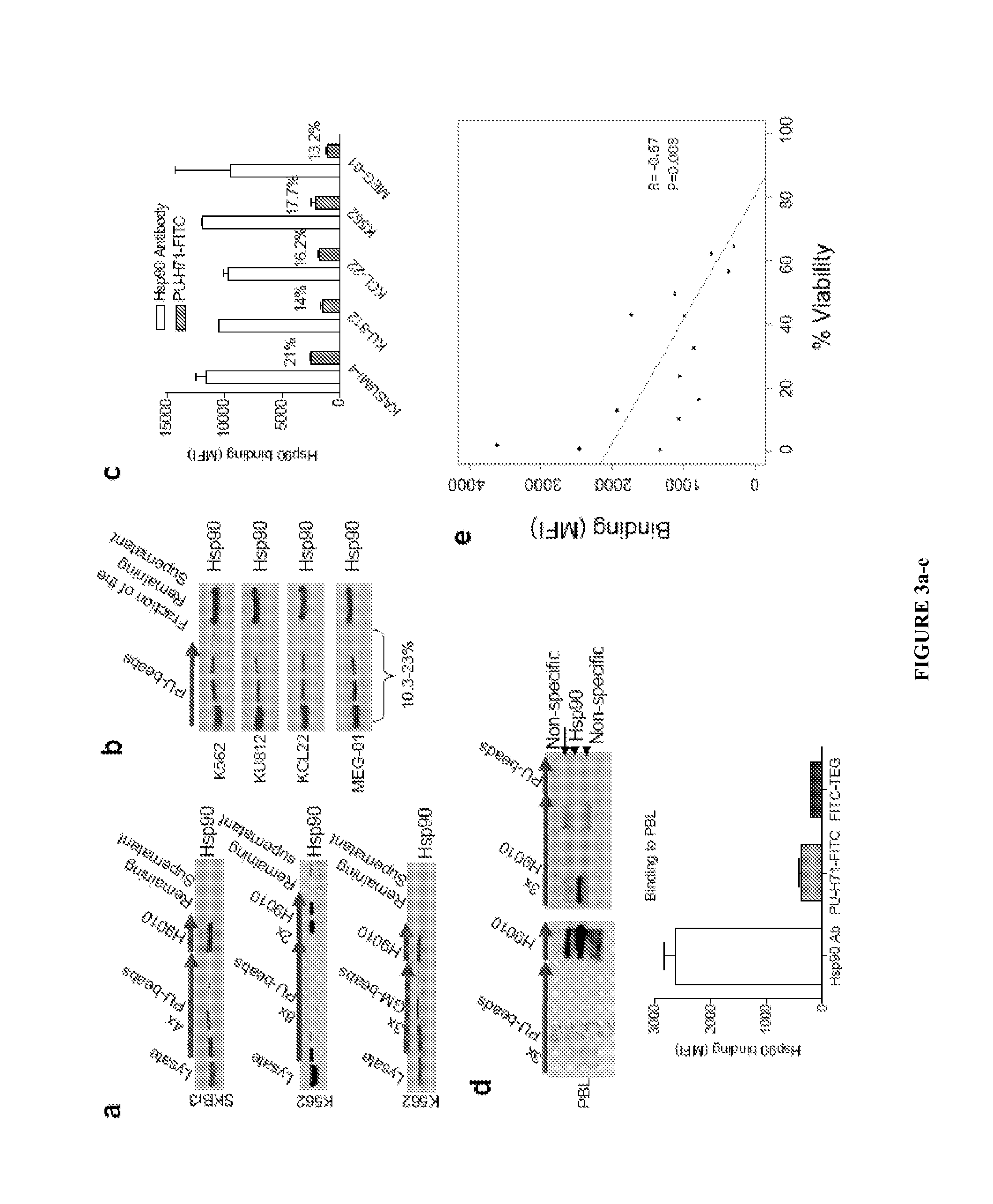Uses of labeled hsp90 inhibitors
a technology of hsp90 inhibitors and labeled hsp90, which is applied in the field of use of labeled hsp90 inhibitors, can solve the problems of inability to find biomarkers that predict which cancers and patient populations will be most sensitive to such treatment, and cannot be used in clinical assays that can non-invasively ascertain hsp90-target inhibition, etc., and achieve the effect of improving the treatment of cancer patients
- Summary
- Abstract
- Description
- Claims
- Application Information
AI Technical Summary
Benefits of technology
Problems solved by technology
Method used
Image
Examples
Embodiment Construction
5.1. Oncogenic HSP90 as a Tumor Specific Biomarker
[0130]The disclosure provides evidence that the abundance of this particular “oncogenic HSP90” species, which is not dictated by HSP90 expression alone, predicts for sensitivity to HSP90 inhibition therapy, and thus is a biomarker for HSP90 therapy. The invention also provides evidence that identifying and measuring the abundance of this oncogenic HSP90 species in tumors predicts of response to HSP90 therapy.
[0131]In the following sections, we show that the HSP90 inhibitor PU-H71 targets tumor-enriched HSP90 complexes and affinity-captures HSP90-dependent oncogenic client proteins. The compound PU-H71 was disclosed in U.S. Pat. No. 7,834,181, which is hereby incorporated by reference. PU-H71 has the following chemical structure:
PU-H71 can be administered as a free base or as a pharmaceutically acceptable salt.
[0132]In addition, we show that the abundance of the PU-H71-enriched HSP90 species, which is not dictated by HSP90 expression ...
PUM
| Property | Measurement | Unit |
|---|---|---|
| time | aaaaa | aaaaa |
| time | aaaaa | aaaaa |
| time | aaaaa | aaaaa |
Abstract
Description
Claims
Application Information
 Login to View More
Login to View More - R&D
- Intellectual Property
- Life Sciences
- Materials
- Tech Scout
- Unparalleled Data Quality
- Higher Quality Content
- 60% Fewer Hallucinations
Browse by: Latest US Patents, China's latest patents, Technical Efficacy Thesaurus, Application Domain, Technology Topic, Popular Technical Reports.
© 2025 PatSnap. All rights reserved.Legal|Privacy policy|Modern Slavery Act Transparency Statement|Sitemap|About US| Contact US: help@patsnap.com



